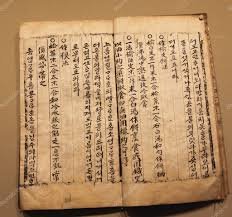Paper originated from china

Paper: A Remarkable Invention Originating from China
When we hold a piece of paper in our hands, it’s difficult to imagine a world without this versatile material. Paper has become an integral part of our lives, being used for communication, record-keeping, art, and numerous other purposes. But have you ever wondered where it all began? Surprisingly, the roots of paper can be traced back to ancient China, where this ingenious invention originated.
Origins of Paper in China
The history of paper begins over two thousand years ago, during the Han Dynasty (202 BCE - 220 CE) in China. It was during this time that a significant breakthrough occurred, leading to the invention of what we now know as paper. Cai Lun, a Chinese court official, is credited with this remarkable achievement.
Cai Lun invented paper by blending bark fibers from mulberry trees, old rags, and fishing nets. This mixture was soaked in water, pounded into a pulp, and then spread out on a flat surface to dry. The resulting material was thin, strong, and lightweight, making it an exceptional alternative to other writing surfaces.
The Impact of Paper
The invention of paper had a profound impact on Chinese society. Prior to its creation, various materials such as bamboo strips, silk, and animal bones were used as writing surfaces. However, these materials were expensive, heavy, and cumbersome to transport. Paper, on the other hand, was much more affordable, lightweight, and easier to produce, revolutionizing the way information was recorded and conveyed.
The emergence of paper brought about massive advancements in education, communication, and bureaucracy. It allowed scholars, artists, and officials to share their ideas and knowledge more efficiently. The availability of paper also facilitated the spread of Buddhism within China and the exchange of ideas along the famous Silk Road, contributing to cultural and intellectual development.
The Spread of Paper to the World

Although paper was initially a well-kept secret in China, its production method eventually spread beyond its borders. In the 7th century, papermaking techniques reached Korea and Japan through cultural and trade exchanges. The Arab Empire acquired knowledge of papermaking during the 8th century, and from there, it spread to Europe in the 12th century.
The arrival of paper in Europe marked a turning point in history. It helped ignite the Renaissance, leading to a surge in literary pursuits, scientific discoveries, and artistic achievements. Prior to this, Europe mainly relied on parchment and vellum made from animal skins, which were expensive and limited in supply. The introduction of paper democratized information and promoted the growth of knowledge throughout the continent.
Conclusion
The history of paper is a testament to human ingenuity and the continuous quest for improvement. Its origins in China and subsequent spread to the rest of the world have had a profound impact on every aspect of society. Today, as we go about our lives surrounded by paper, let’s take a moment to appreciate the remarkable journey this invention has made over centuries, connecting people, enabling progress, and preserving our collective history.
Sources:
https://www.timetoast.com/timelines/history-of-paper—28
Tags
Share
Related Posts
Quick Links
Legal Stuff


